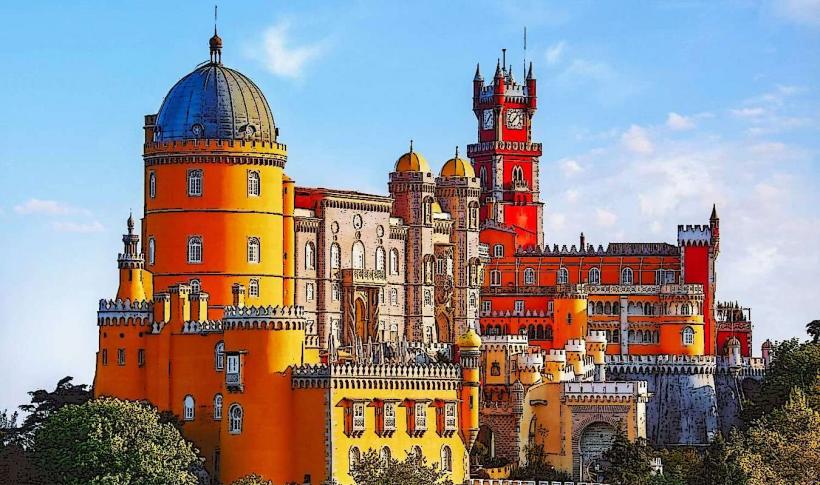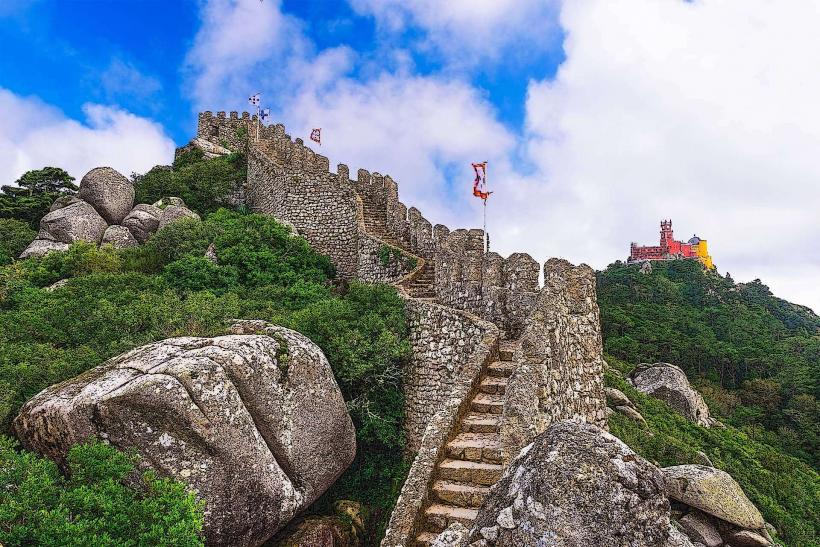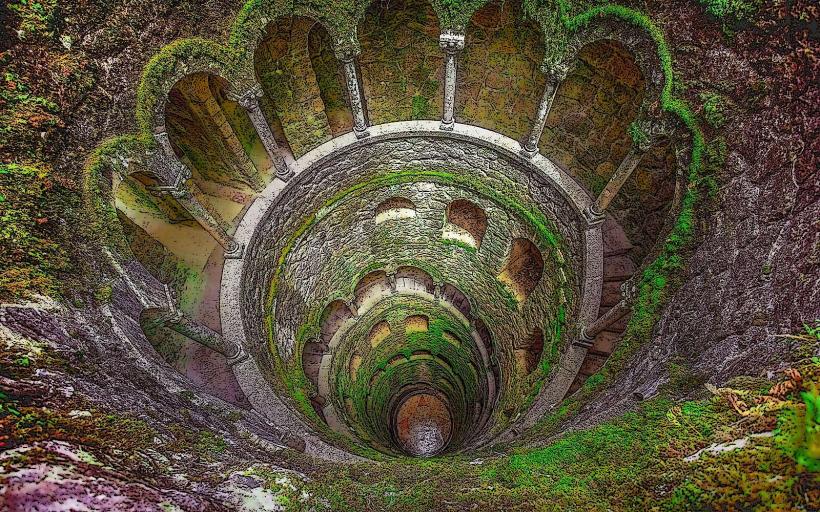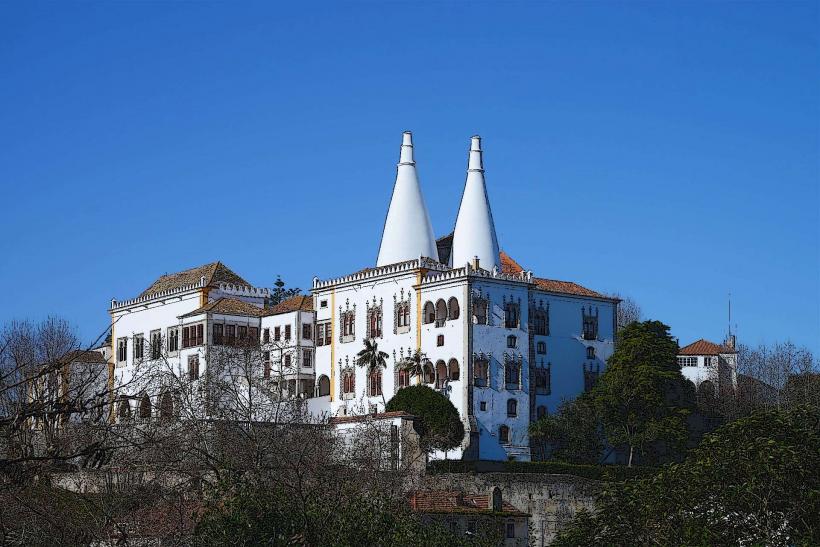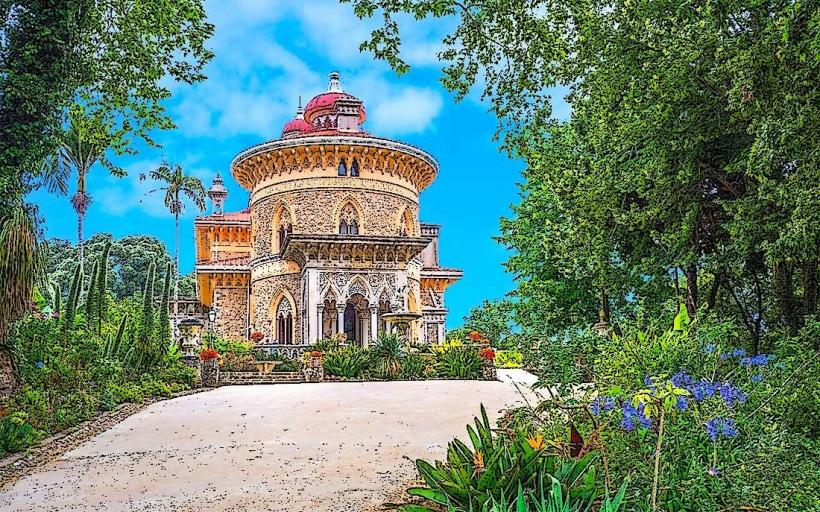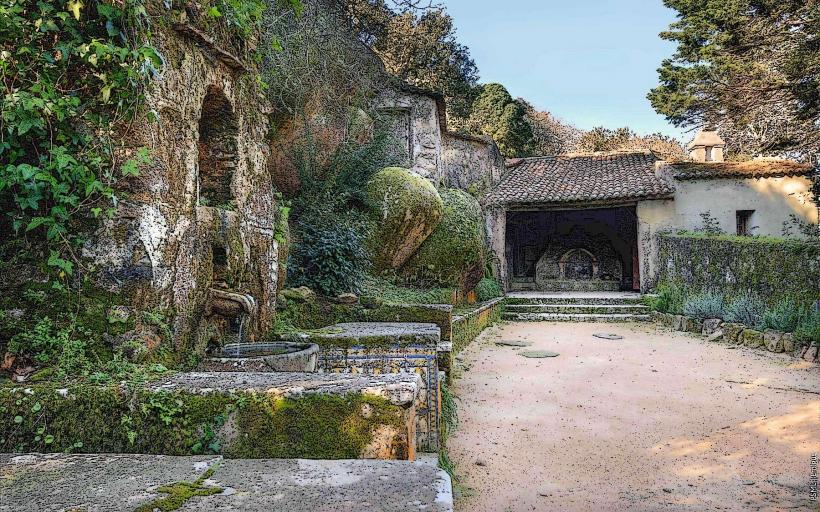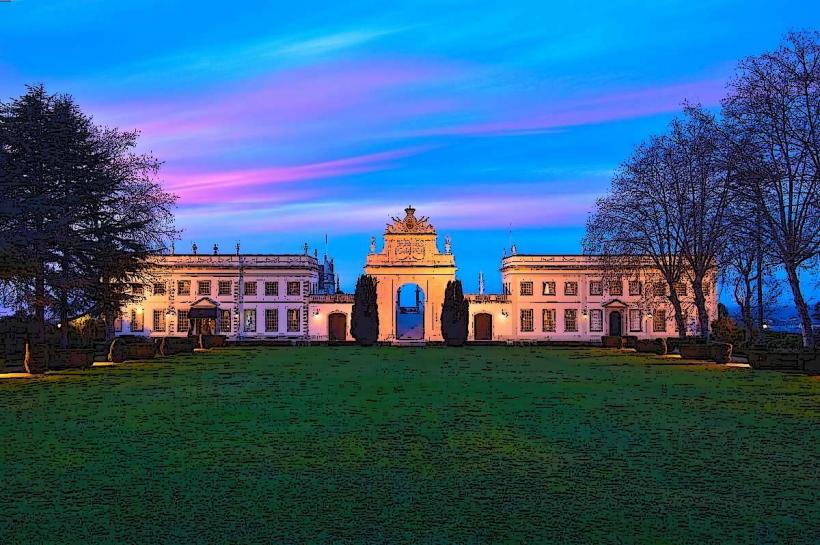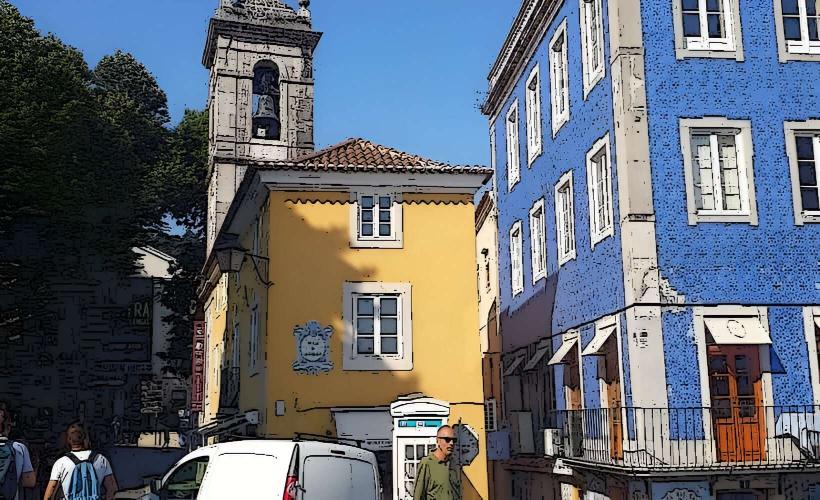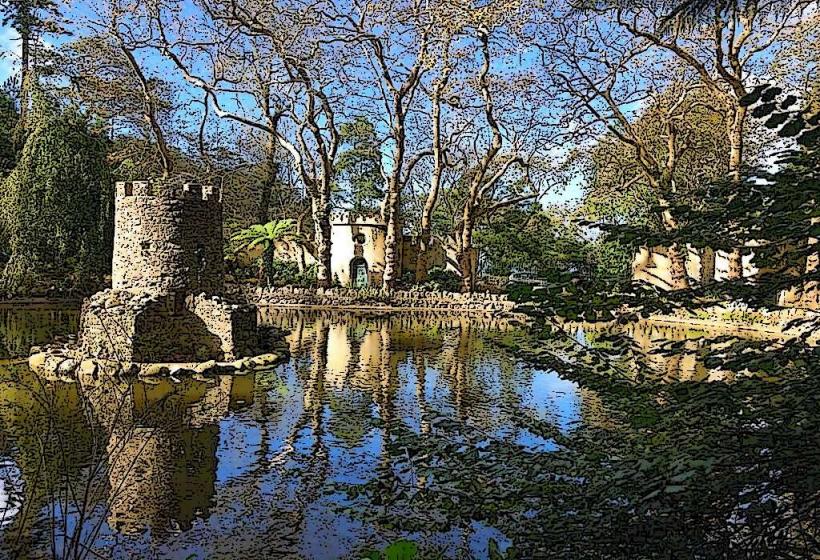Information
Landmark: Chalet of the Countess of EdlaCity: Sintra
Country: Portugal
Continent: Europe
The Chalet and Garden of the Countess of Edla (Chalet e Jardim da Condessa d'Edla) is a charming and romantic 19th-century estate located in Sintra, Portugal. Nestled in the forested hills of the Sintra Mountains, it is a unique and picturesque example of romantic architecture and landscape design. The chalet and its gardens offer visitors a glimpse into the life of Portuguese aristocracy during the 1800s, along with a tranquil setting surrounded by nature. It is often considered one of Sintra’s hidden gems, combining natural beauty with historical interest.
1. History and Background
- Construction and Ownership: The Chalet of the Countess of Edla was built between 1864 and 1869 by the Countess of Edla, Elisa Hensler, the second wife of King Ferdinand II of Portugal, who was also the monarch behind the creation of Palácio da Pena. The countess, a former opera singer of Swiss origin, had the chalet constructed in the Swiss chalet style, which was a popular architectural trend in 19th-century Europe, particularly among the European aristocracy.
- Romantic Era: The palace was built as a private retreat for the royal couple, offering an intimate getaway from the pressures of court life. King Ferdinand II, an accomplished artist and lover of nature, played a significant role in the design of the property. The chalet's design reflects the Romantic period’s fascination with nature and the merging of architecture with the surrounding landscape.
- Post-Royal Ownership: After the royal couple’s relationship ended, the property remained in royal hands until the early 20th century. In 1910, with the establishment of the First Portuguese Republic, the monarchy was abolished, and the property passed into private ownership. Today, it is managed as part of the Sintra Parks.
2. Architectural Features
- Swiss Chalet Style: The architecture of the Chalet of the Countess of Edla is a perfect example of the Swiss chalet style, a form of alpine architecture popularized in the 19th century in Europe. The chalet features wooden construction, sloping roofs, and decorative elements inspired by mountain homes in Switzerland.
- Wooden and Stone Details: The exterior of the chalet is characterized by wooden beams and carved stonework, giving it a rustic yet elegant appearance. The building’s architecture was designed to blend with the surrounding forest and mountainous landscape, creating a sense of harmony with nature.
- Interior Design: The interior of the chalet retains much of its original charm, with wooden paneling, rustic furnishings, and decorative touches that reflect the taste of the time. The interior spaces include a small drawing room, bedrooms, and a dining area, all designed to offer comfort and coziness while retaining a connection to nature.
- Decorative Elements: Inside the chalet, there are several artistic elements that reflect the personal tastes of both King Ferdinand II and the Countess of Edla, including paintings, antique furniture, and luxurious textiles. The interior spaces are relatively modest but warm, in contrast to the more formal and opulent royal palaces of the time.
3. The Gardens
- Romantic Gardens: The gardens surrounding the Chalet of the Countess of Edla are an essential part of the property, designed to complement the romantic spirit of the chalet. The gardens feature a mix of wooded areas, formal paths, and natural plantings, all organized in a way that emphasizes peace and tranquility.
- Landscaped Paths: The gardens are designed with meandering paths, inviting visitors to explore the grounds at their own pace. These paths are lined with a variety of trees and bushes, and they lead to several viewpoints offering panoramic views of the surrounding countryside.
- Artificial Caves and Grottoes: One of the most distinctive features of the gardens is the presence of artificial caves and grottoes, which were inspired by the romantic tradition of creating mysterious, naturalistic spaces in gardens. These grottoes, made of stone and vegetation, were intended to create a sense of discovery and intrigue for visitors.
- Floral Variety: The gardens feature a wide range of plants, including exotic species, flower beds, and shrubs. The Countess of Edla, who had a passion for horticulture, is thought to have played a role in the development and design of the garden’s plant life, which included both native and imported species.
- Water Features: The gardens include several water features, such as small ponds, fountains, and streamlets, which enhance the serene atmosphere of the area. These features were designed to integrate water into the landscape, creating a soothing sound that adds to the gardens' peaceful ambiance.
4. The Setting and Views
- Location in Sintra: The Chalet and Garden of the Countess of Edla are located within the Sintra Mountains, offering stunning views of the Palácio da Pena and the surrounding landscapes. The property is surrounded by lush forests, which are part of the Sintra-Cascais Natural Park, a protected area of great ecological and natural importance.
- Panoramic Views: From the chalet, visitors can enjoy panoramic views of Sintra, including the iconic Palácio da Pena, the Moorish Castle, and the valley below. The surrounding hills and forests create a serene environment that adds to the romantic charm of the estate.
- Seclusion and Tranquility: The location of the chalet, away from the more tourist-heavy areas of Sintra, makes it a perfect spot for those looking for peaceful solitude and an immersive experience in nature. The site’s seclusion adds to its allure, providing a retreat-like atmosphere.
5. Cultural Significance
- Romantic Influence: The Chalet and Garden of the Countess of Edla are a testament to the Romantic period in Europe, which emphasized an appreciation for nature, individuality, and emotional expression. The property reflects these ideals through its design, setting, and atmosphere.
- Royal Connection: The connection to King Ferdinand II and his second wife, the Countess of Edla, adds to the historical importance of the site. King Ferdinand II, who was instrumental in transforming Palácio da Pena, had a great love for nature and was responsible for many of the landscape features in the area, including the creation of the gardens at the Chalet.
- Horticultural Heritage: The gardens also showcase the Countess of Edla's love for horticulture and the influence of her personal interest in plants. The blending of artificial and natural elements in the garden's design was typical of the Romantic gardens of the time.
6. Visitor Experience
- Exploring the Chalet: Visitors to the Chalet and Garden of the Countess of Edla can explore the interior of the chalet, experiencing its rustic elegance and discovering the history of the royal couple through photographs, furniture, and other objects on display. The intimate size of the chalet allows visitors to feel the personal and private nature of the space.
- Strolling the Gardens: The gardens offer a relaxing environment for visitors to take leisurely walks among the trees, water features, and flower beds. The paths invite exploration and encourage a peaceful connection with the natural surroundings.
- Educational Value: The site also provides educational value, offering visitors the opportunity to learn about the history of the chalet, the royal family’s connection to Sintra, and the horticultural practices of the time.
- Less Crowded: Unlike other more popular attractions in Sintra, such as the Palácio da Pena, the Chalet and Garden of the Countess of Edla tend to be less crowded, providing a more personal and tranquil experience.
7. Practical Information
- Location: The Chalet and Garden of the Countess of Edla are located in the Sintra Mountains, about 3 km from the center of Sintra, near the Palácio da Pena.
- Opening Hours: The site is typically open year-round, although it is always advisable to check current hours before visiting, as they may change due to seasonal or special events.
- Admission Fees: There is an entrance fee for visiting the chalet and gardens, which helps with the maintenance of the site.
- How to Get There: The chalet can be accessed by car, taxi, or on foot from the center of Sintra. Visitors can also combine the visit with a trip to nearby attractions like the Palácio da Pena.
8. Conclusion
The Chalet and Garden of the Countess of Edla offers a serene and picturesque escape in the heart of Sintra’s natural beauty. The romantic architecture, tranquil gardens, and historical connections to the Portuguese royal family make it a unique and memorable attraction for visitors seeking a quieter, more intimate experience in Sintra. Whether exploring the chalet's cozy rooms

